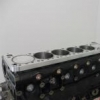Faster Warm Up For A Dry Sump'd Engine... Oil Tank Heaters?
Announcements
-
Similar Content
-
Latest Posts
-
I searched , but did not find what I need, I am mainly looking for where the jack fits into bracket in rear left trunk/fender bracket on a GTT and what holds it in place.
-
I go back to, skip the concrete, we just need smooth dirt/grass... You weld us up one of those huge take like things you buy at Bunnings for spreading dirt nicely, except we'll tow it behind a car instead of push by hand. 😛
-
By Dose Pipe Sutututu · Posted
That's great news Skyline scene is a bit odd (yes I've been following that particular Facebook page), and most of the owners are young boys with no money. -
fair call, but the going price of a '16 RS is around $30k. also don't think you have any chance of finding a '21 400R for close to that figure. If you find one.. sign me up!
-
We've been working on all sort of different types of turbos with majority of work load shifting towards Euros in the last few years. The Skylines are more of a hobbie then a daily, at least its like that in Australia. I will update photos from some of our latest RB jobs. Whats recent is G30 turbine housing externally gated plumb back kit using T3 .83 geninue housing. It can be made to suit G35, G40 and G42 units. External gate optional.
-







Recommended Posts
Create an account or sign in to comment
You need to be a member in order to leave a comment
Create an account
Sign up for a new account in our community. It's easy!
Register a new accountSign in
Already have an account? Sign in here.
Sign In Now